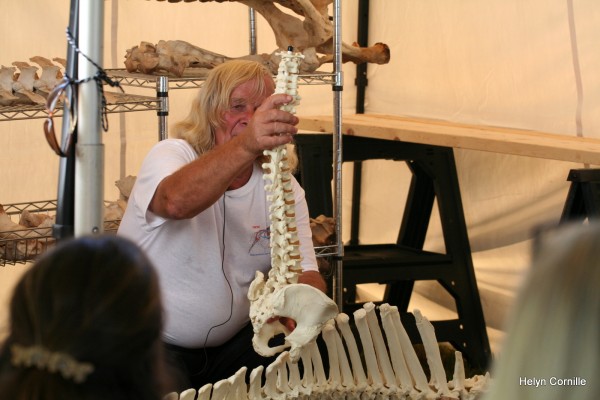 Discussion on our IHTC group-about the DVD "The Horse That Could Not Trot". Jean Luc Cornille and Stacy Wilson.
Discussion on our IHTC group-about the DVD "The Horse That Could Not Trot". Jean Luc Cornille and Stacy Wilson.Stacy Wilson: The horse that could not trot was so educational on a lot of levels. Don't want to spoil it for those that have not seen it yet, but have to wonder how many horses are labeled lame, lazy or bad behavior when in fact many times it is none of those things. I was so fascinated at how I could see more and more what was going on as the video progressed and the root cause was slowly revealed.
The ending was simply incredible.
JLC, what is your outlook when you encounter these unusual cases, did you have doubts back then if the horse could be re-educated? I loved the way that you never punish the horse, but seem to just take it all in to try to figure out what it is that the horse is trying to communicate. I know in the hands of most trainers that horse would have ended up being abused and totally ruined or labeled unsound and maybe kept as a pet or worse sent to auction at such a young age.
Stacy. Good observation. The trainer was already saying that the trot issue was due to laziness. The vets advised putting the horse to sleep. Yes, there is always a doubt about reeducation. Rehabilitation is a beautiful idea but the reality is very difficult. Even when you think that you have identified the source of the problem, there is always the possibility of a deeper problem. The fact that the horse was young and barely under the saddle was a great advantage. Memories are very difficult to deal with and when a horse arrives after one or more "rehabilitation programs which have failed, the mental problem is even worse than the physical issue. The only chance of success is keeping the dialogue open with the horse. The horse reacts and the next day, develops different contractions and protective reflex mechanism. From the horse's perspective, a protective reflex mechanism is a survival instinct and any forceful approach will simply reinforce the protective reflex mechanism. Also there are very often several layers of protection and releasing one layer is a progress but does not create soundness yet. This is a difficult part too. The horse is not sound yet and the question crosses your mind, am I on the good track? You need to believe in the horse. A horse does not want to be lame. If the rehabilitation program aims toward soundness, the horse works with you. Each new reaction even a lame one, is the horse part of the work. The analysis is the rider task. Where is the root cause based on what the horse just say. When one tries fitting the horse to a system, the horse has no chances. It demands a considerable knowledge but a dynamic one. Yes one needs to know the muscles and their main functions. This is why the first 5 installments of the IHTC were about overall functioning. The one that we are currently finishing, IHTC6 and the next ones are about putting all that together with the study and practice of all different movements. A movement will not do any therapy if the horse is not precisely coordinated for the athletic demand. Knowledge also permit selecting movements that might have some therapeutic effects and avoiding movements which are plain damaging. The knowledge of anatomy is necessary but without sound understanding of the horse's proper functioning, anatomy does not go very far. Recently it was an add that perfectly illustrated this problem. The trainer advised a course of anatomy and then goes on explaining how to teach half turn around the forelegs. It was an oxymoron. There is no physical advantage whatsoever in practicing turn around the forehand. The move puts the weight on the forelegs and places the hind legs in the wrong position for adduction and abduction. The back is not working and therefore the pelvis does not have any chance of creating the necessary dorso-ventral rotation. The move is damaging from many different angles. This is where anatomy without proper understanding of equine biomechanics is a dangerous combination. JLC






